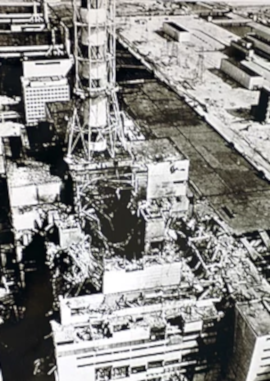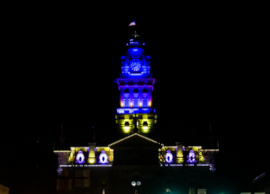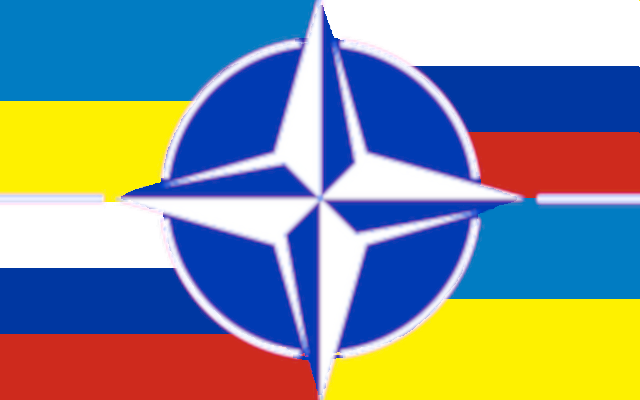On Thursday 24 February 2022, Ukraine was invaded by troops from the Russian Federation. The rationale was that two provences in Eastern Ukraine, Donesk and Luhansk, have declared their independence from Ukraine proper and the Russian military went in to support these brave freedom fighters.
The war against NATO
The NATO treaty commits each of its member nations to support the others in case they’re attacked. But attacked by whom? It’s become increasing clear that the bogey everyone is worried about is Mother Russia. So NATO was formed to protect these countries from attacks by Russia, but Russia needs to protect herself from NATO missle bases on its doorstep — so the war is not so much an attack on Ukraine, but a confrontation with NATO.
The expansion of NATO eastwards, right up to Russia’s perimeter, is an act that the Russian President Vladimir Putin cannot ignore. Let me continue with an analogy:
The Cuban Missile Crisis
In 1962, the Soviet Union, which was the predecessor of today’s Russia, started shipping missle components to the island nation of Cuba, just 137 km/90 miles away from the U.S. state of Florida. This would have put the U.S. under the threat of a sudden missile attack — something then-President John F. Kennedy could not ignore. He threatened a full-scale war over the issue. The Soviets “blinked” and removed the missles. If the Americans couldn’t accept hostile missles on their doorstep, how could anyone expect today’s Russians to do so?
Access to warm water ports
There are basically only four ways to send cargo vessels out from Russia to the world:
- ◆ Across the Arctic Ocean, which is too icy to successfully navigate (although with global warming, who knows?)
- ◆ Out of Vladivostok, which is ice-free year round, but only allowing access east to the Pacific Ocean, not west to Europe and Africa.
- ◆ From the Port of Murmansk, also ice-free, giving access to the northern countries such as Norway, and
- ◆ Through the Sea of Azov, the Black Sea, and the Caspian Sea; then through to the Mediterranean, and if necessary, out to the Atlantic. This route is much of what this war is all about, as Ukraine flanks Russia’s trade route and could easily block marine traffic. (In particular, the Russian shipping route goes right off the coast of Donesk and Luhansk.) Note: I saw the Black Sea on YouTube once, and it’s true — the Black Sea really is black.
Losing access to a warm-water port would be a disaster for Russia, another reason why Putin can’t back down.
The Ukrainian oil fields
I don’t know how much oil is under the eastern part of Ukraine but this could be another reason for Russian intervention.

The battle of Chernobyl
The Russian Army attacked through Chernobyl, in the neighborhood of the ill-fated Chernobyl nuclear power plant that melted down in 1986. My first thought was that they’re going inside the containment to look for leftover nuclear by-products that could be turned into weapons-grade fissionables. But the truth is more pedestrian than that; Chernobyl is simply the most convenient route from Russia to the Ukrainian capital, Kiev.
England’s shame
England wanted to block any news contrary to the official government viewpoint so the people will have just “one narrative” to listen to. In other words, if you disagree with what the Government are saying (such as this article), the “Ministry of Truth” there will block you from telling anyone about it. These sort of restrictions on unfettered speech are hardly acceptable for a Western democracy, although this announcement has since been taken down — perhaps someone there decided this was inappropriate.
I myself refuse to listen to only one side of the story. I have four different news sites just a click away, from three different countries in different parts of the world.
Sanctions and other bla-bla
There’s been a lot of talk about “sanctions” by the international community. But so far no country wants to send in troops to go mano-a-mano with the Reds. If not, there is effectively no opposition to the invasion. Again, I’m not saying anything about what should be done, only pointing out what will happen if they do/don’t.
The whole idea of sanctions is mainly this: if someone wants to buy goods from another country, they deposit local currency into an account. This deposit is converted into U.S. dollars, then into the currency of the exporting country, and then paid to the actual seller. This is done through the SWIFT system.
But the fact that accounts are denominated in U.S. dollars gives the U.S.A. power over how those dollars are paid out. “Sanctions” block the flow of funds from one nation to another, and before you know it, foreign goods become unavailable to you because there’s no way for you to pay for them.
The alternative to SWIFT is the BRICS system, which has yet to go live. BRICS stands for Brazil, Russia, India, China, and South africa; which together constitute 1/6 of the world’s economy.
However, as I was preparing this article, the Bank of Russia has launched its own SWIFT replacement, SPFS. Perhaps this is the fulfillment of this prediction.
 Other than that, politicians are giving lots of speeches and a lot of landmark buildings are being lit up in blue and yellow lights. A fine show of solidarity for Ukraine, but unlikely to make any serious difference.
Other than that, politicians are giving lots of speeches and a lot of landmark buildings are being lit up in blue and yellow lights. A fine show of solidarity for Ukraine, but unlikely to make any serious difference.
Military support for Ukraine
While Ukrainians are fighting bravely to defend their country, I unfortunately don’t see any substantial “official” support showing up. U.S. President Joe Biden said that “no American troops” will be committed. However, Ukraine is inviting people from around the world to enlist as private citizens.
Please remember
I’m not praising Putin and the Russian Federation for their actions, and I’m not condemning them either. Please remember that what I’m saying is that Russia in in a position where it can’t back down. Any nation wanting to intervene would need to remember that. Russian Foreign Minister Sergei Lavrov has warned that if other nations intervene, and a world war should result, a nuclear response could follow.
